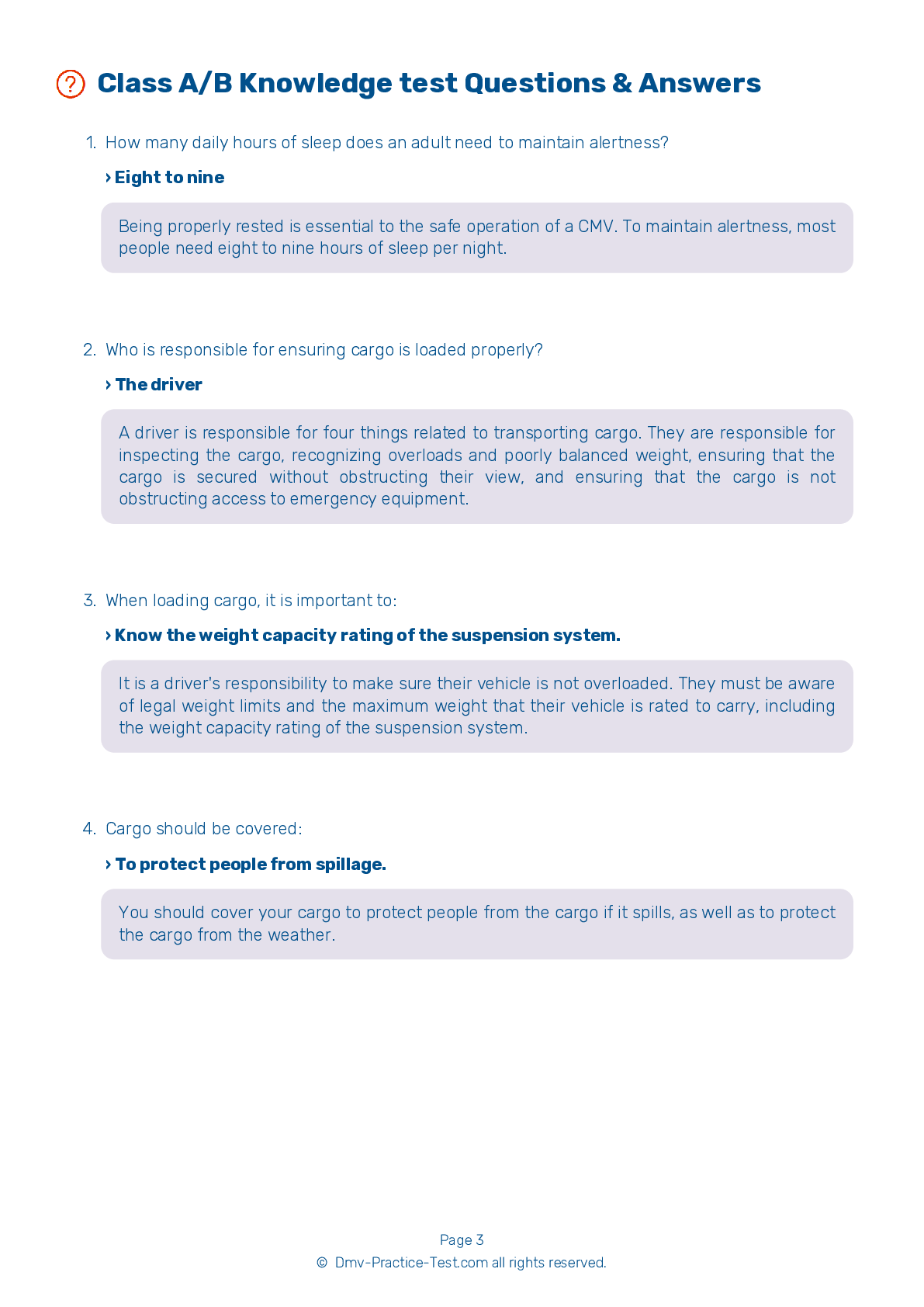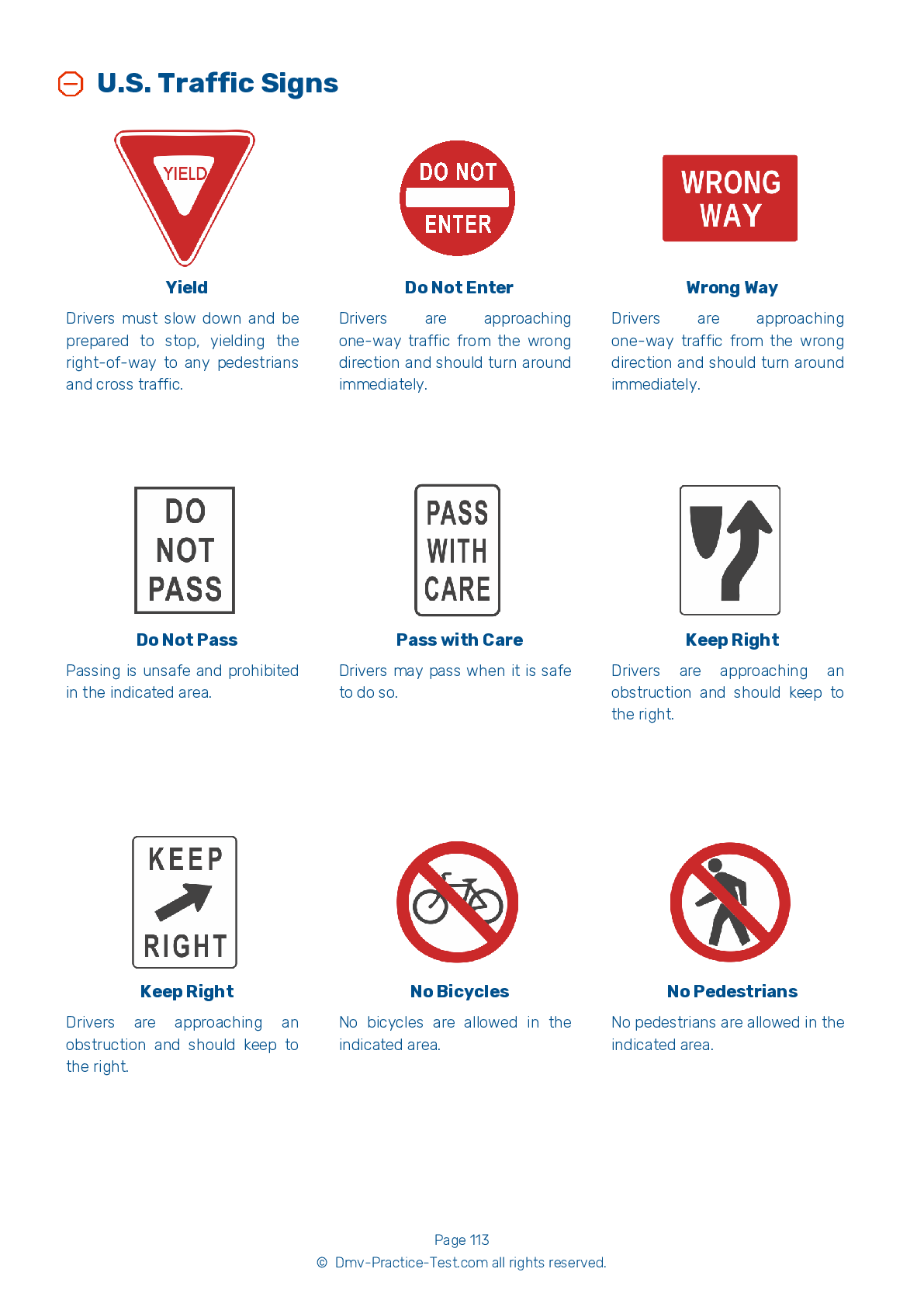Tank Endorsement Test | Vermont 2025 #2 Page 3 of 3
Train for FREE with our Vermont tank endorsement practice test online. The official exam test consists of several obligatory parts, with all of them checking your knowledge of different blocks of road rules. If you need to obtain a VT tank license in 2025, practice as much as possible. Free sample tests published on our website will help you check and improve your knowledge and boost your grades. Please bear in mind that DMV requirements for issuing a CDL tank vehicle endorsement may vary from state to state.
15 . If a driver has stopped on the road and is placing triangles to warn other motorists:
For your own safety, when placing reflective warning triangles, you should carry them between your body and the oncoming traffic.
16 . Backing with a trailer is dangerous because:
Backing a truck is always dangerous because the driver may not be able to see everything behind them. CMV operators should avoid backing whenever possible.
17 . Talking on a hands-free phone while driving:
While speaking on a hands-free phone while driving is less dangerous than speaking on a hand-held phone, it is just as likely to mentally distract a driver. Simply engaging in conversation takes their mental focus away from the task of driving.
18 . When it’s difficult to see, such as at dawn or dusk, a driver can increase their vehicle's visibility by:
When driving at dawn, at dusk, or in inclement weather, you should use your headlights on their low beam setting to increase your visibility.
19 . On any upgrade, gravity will:
A vehicle will be slowed down by gravity on any uphill grade. You may need to switch to a lower gear to climb a steep grade.
20 . Backing with a trailer is dangerous because:
Backing is always dangerous because it is impossible to see everything that is behind your vehicle. Only drive in reverse if it is absolutely necessary.
See the exact questions that will be on the 2025 Vermont DMV exam.
99.2% of people who use the cheat sheet pass the FIRST TIME
Lillian MCcranie explains how our CDL study guide was helpful in passing the exam and recommends it to everyone.
Cameron tells us how he purchased the CDL exam, and found it to be a useful tool which helped him pass the exam and find a job.



